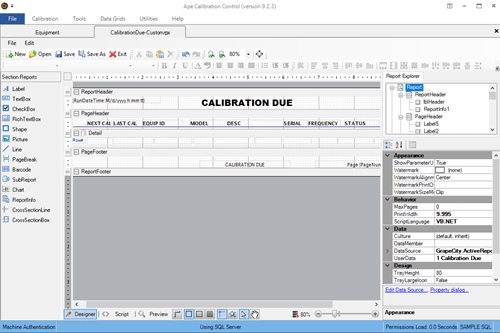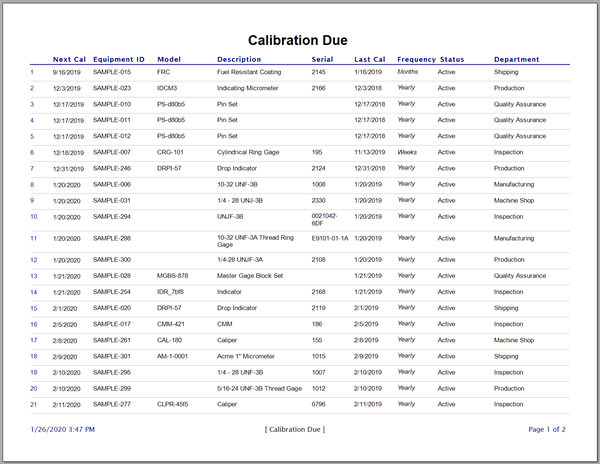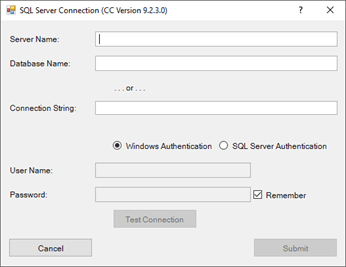Height Gage Calibration
Purpose
The purpose of this procedure is to provide general instructions for the calibration of height gages.
Scope
This general procedure shall be used in the absence of any specific calibration procedure for height gages.
Procedure
Preliminary Instructions and Notes
- Read this entire procedure before beginning the calibration.
- Calibration shall be performed in an environment that conforms to Manufacturer Specifications.
- The height gage will hereafter be referred to as the Instrument Under Test (IUT).
- Verify that the IUT is clean.
- Visually examine the IUT for any condition that could cause errors in the calibration.
- Instability and set-up errors will result in false calibration readings. The higher the measured plane, the greater the errors may be.
- Use a hard arkansas stone to remove only the positive surface imperfections around the perimeter of the base and gaging surface.
- If any of the requirements cannot be met, refer to the applicable manufacturer manual.
- If a malfunction occurs or a defect is observed while calibration is in progress, the calibration shall be discontinued and necessary corrective action taken; if corrective action affects a measurement function previously calibrated, the function shall be recalibrated before the remainder of the procedure implemented.
Reference Material
Applicable Manufacturers Manual or Brochures.
Specifications
The specifications of the IUT are determined by the applicable manufacturer's documentation. If the manufacturer's documentation is not available, then the specifications identified in this procedure are used.
IUT accuracy shall be considered acceptable when within one graduation of the gage.
Equipment Required
The Standards listed below should be selected on the basis of their higher accuracy level when compared to the unit under test. Equivalent Standards must be equal to or better than the Minimum-Use-Specification.
Minimum-Use-Specifications for Standards listed are 1/4 the accuracy required by the IUT.
- Cleaning solution
- Hard arkansas stone
- Lint free cloth
- Gage block set
- Surface plate
- Gage oil
Detailed Procedure
- Carefully examine entire gage for nicks, burrs, scratches, other signs of mishandling or wear. Check the sliding member of the IUT to assure smooth movement and positive locking.
- Apply sufficient amounts of cleaning solution to dampen a lint free cloth. Carefully clean all exposed surfaces removing all foreign substances and particulate matter. (Use brush on pinion track if necessary.) Lightly apply gage oil to cleaned surfaces.
- Place IUT on the surface plate to check base flatness. Apply pressure at various locations. There should be no movement.
- With sliding member set above zero, slowly slide IUT on surface plate to again check condition of base. There should at least be a feeling of drag or suction. A base in excellent condition will wring to a good surface plate.
- If any defects have been found at this point that would affect accuracy or function of gage, discontinue calibration and either repair or recalibrate, or return as is for restricted use or scrap.
- Divide the total measurement range of IUT into two equal parts. Randomly select six checkpoints in the lower half of the measurement range. Select two additional checkpoints in the upper half of the measurement range.
- With measurement contact in its lowest obtainable position, adjust gage to indicate zero.
- Place the gage block(s) along side the IUT on surface plate.
- Raise sliding member of IUT and position in such a manner so as to verify measurement accuracy with respect to the gage block(s).
- Repeat steps 8 and 9 for remaining check points.
Reason for Reissue
Revision A - First Release





